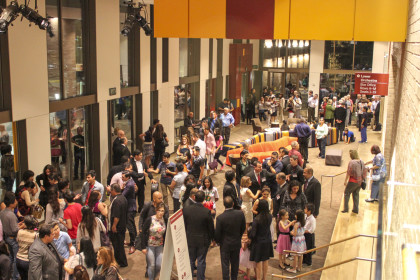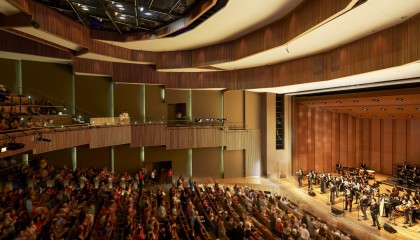In a March 2014 blog, I discussed the construction and design of the new University of Texas Pan Am Performing Arts Center in the Rio Grande Valley. Now the building is complete and this spring saw its first concert. Following a punch list that was accomplished over the summer, the complex has opened full blast this fall.
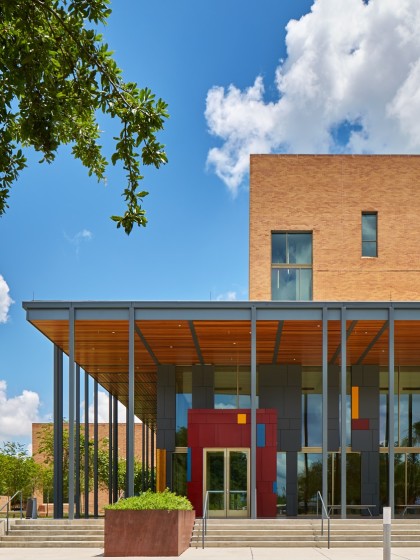

There are two things I particularly love about this project. First, it is very much a campus building. Houston architect Ken Benson designed the UT Pan Am campus in the 1970s, and it has something of a bizarre history. Benson grew up in the Rio Grande Valley and was inspired, not only by the local south Texas vernacular (which produced an impressive collection of distinctive brick buildings), but also by Lou Kahn’s brick buildings in the similar hot, humid climates of India and Bangladesh (see images, below). The fact that I was familiar with and admiring of both the regional vernacular of South Texas and Kahn’s buildings in south Asia may have been one of the reasons we got the job. From the very start we were inspired by the very unusual context of the UT Pan Am campus.
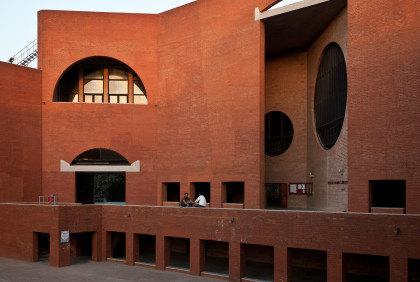
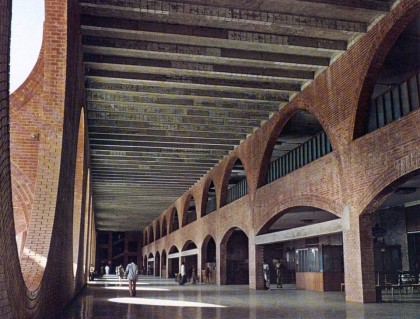
In order to re-establish the Arts Complex and bring it up to current performance standards we removed two buildings and restored two others around an existing courtyard. We also added an entirely new structure that includes a 1,000-seat performing arts auditorium, and four rehearsal halls–one each for band, mariachi jazz, vocal, and orchestra (as illustrated in floor plan, below).
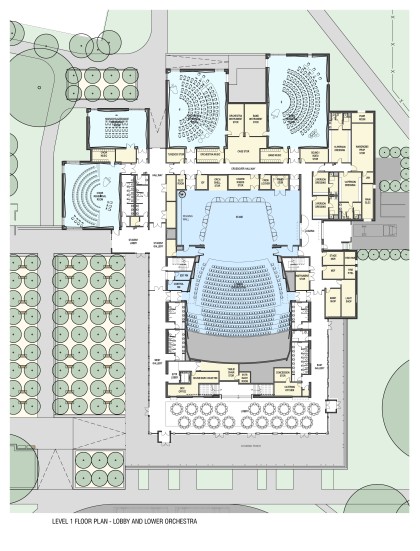
The new complex feels great on the campus: it creates a prominent and contextual gateway that the campus never had before. This also gives a particular significance to the arts. The seminal idea for the complex was to make big masonry volumes – much like Kahn – with bold, strong openings. The openings are here are more lyrical than elsewhere on campus in deference its occupants.
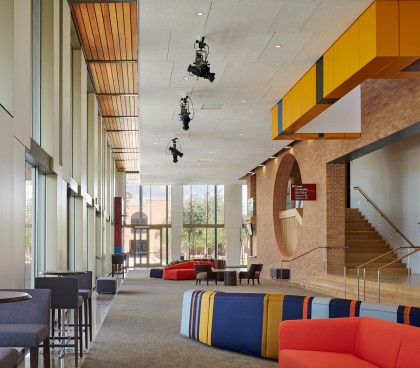
The second thing I love about the building is the sequence of movement through it. Both reading the plan and in actual experience, one readily understands the slow transitions – both in terms of space and scale – that develop as you move through the building. There is an exterior layer of deep, welcoming porch with a broad wood soffit that is beautifully detailed and executed. Inside it, a second layer of lobby space wraps around the very strong brick volume that marks the performance hall.
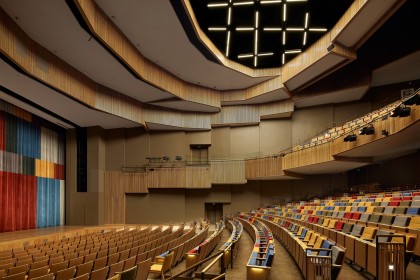
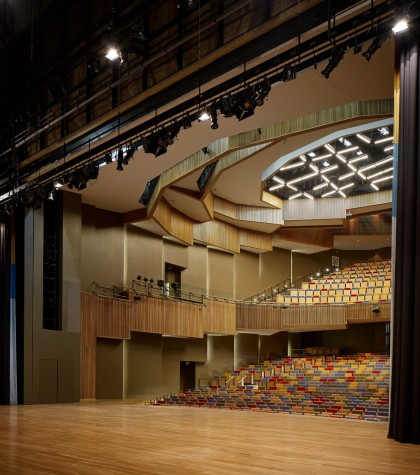
The next layer, inside the brick volume, is full of passages to seats on the upper levels and is lit dramatically from above. The center of all these donut layers is the hall itself, which is full of warm word and rich color. The acoustics are fantastic. The entire space is highly tunable and can be altered according to music type.
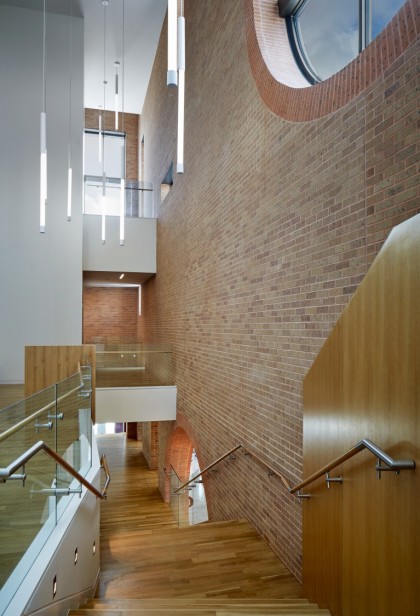
Behind the main performance hall, on the campus side, are the rehearsal halls–four solid brick “ducklings” nested up against the big brick volume of the main hall. UT Pan Am was already well known for its music program. The new building will allow it to take another leap forward. The new complex serves not only students and faculty, but also neighboring communities. It will be the home of the Valley Symphony Orchestra directed by Peter Dabrowski.
